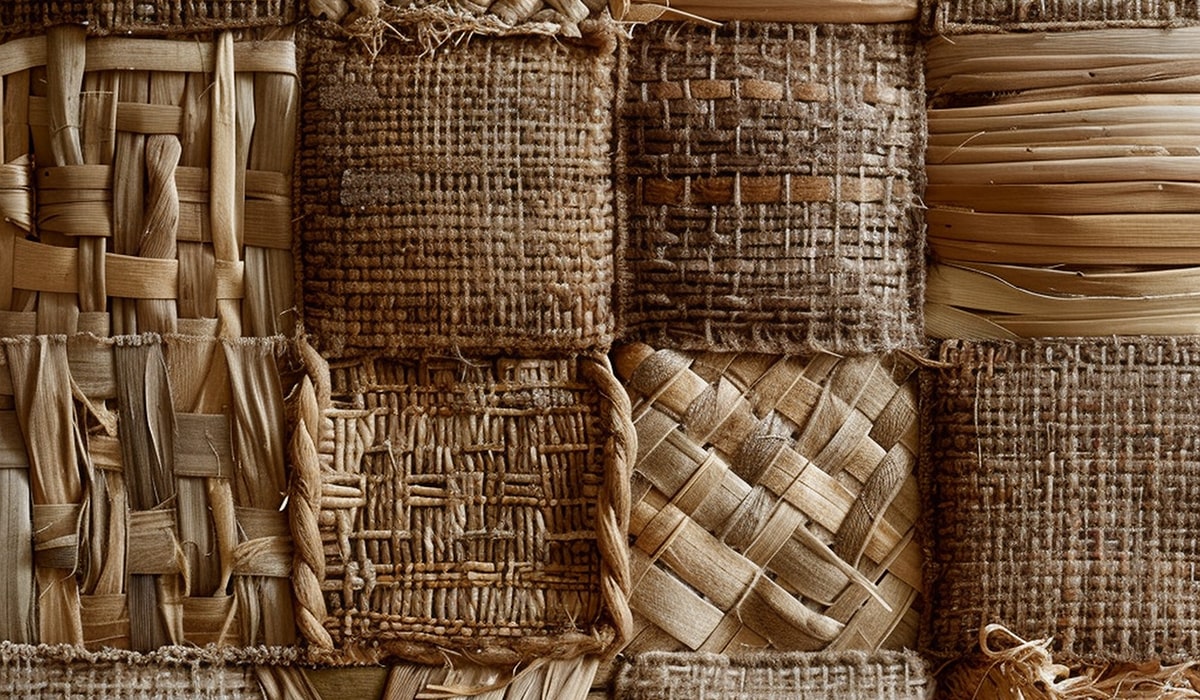Origins and Historical Significance
The history of jute in India dates back thousands of years, with evidence of its cultivation and utilization found in ancient texts and archaeological excavations. Jute cultivation flourished in the fertile plains of the Ganges-Brahmaputra delta, where the region’s conducive climate and abundant water supply provided ideal conditions for its growth.
Initially used by ancient civilizations for various purposes such as ropes, mats, and baskets, jute gradually gained prominence as a valuable commodity in trade and commerce. Its importance grew during the British colonial era when India became a leading exporter of jute fibers to meet the burgeoning demand in the global market.
Traditional Crafts and Artisanal Skills
In India, jute is deeply intertwined with traditional crafts and artisanal skills passed down through generations. From the intricate handloom weaving techniques of West Bengal to the vibrant jute craft traditions of Bihar and Assam, each region boasts its unique artistic expressions using this versatile fiber.
In West Bengal, the heartland of India’s jute industry, skilled artisans transform raw jute fibers into exquisite textiles, including sarees, rugs, and home furnishings. The renowned “DhakaiJamdani” sarees, adorned with intricate jute motifs, exemplify the fusion of tradition and innovation in jute weaving.
Similarly, in Bihar and Assam, jute finds expression in a myriad of handicrafts such as bags, wall hangings, and decorative items. Artisans leverage their creativity and expertise to craft intricate designs, reflecting the cultural ethos and aesthetic sensibilities of their respective regions.
Socio-Economic Impact
Beyond its artistic and cultural significance, the jute industry plays a crucial role in India’s socio-economic landscape, providing livelihoods to millions of farmers, workers, and artisans across the country. In rural areas, jute cultivation serves as a primary source of income for small-scale farmers, contributing to poverty alleviation and rural development.
Moreover, the jute industry remains a significant contributor to India’s export earnings, bolstering the country’s trade balance and foreign exchange reserves. The sector also generates employment opportunities in allied industries such as manufacturing, packaging, and transportation, further stimulating economic growth and development.
Preserving Heritage, Embracing Innovation
While India’s jute tradition is steeped in history and tradition, it continues to evolve and adapt to the changing times. Modern innovations in jute processing, product design, and marketing strategies have rejuvenated the industry, opening up new avenues for growth and sustainability.
Government initiatives promoting sustainable jute cultivation practices, technological advancements in jute processing machinery, and market interventions to enhance the competitiveness of jute-based products are driving the sector towards a brighter future.
Conclusion
In conclusion, the tradition of jute in India is a testament to the enduring legacy of a natural fiber deeply ingrained in the country’s cultural heritage and socio-economic fabric. From ancient times to the present day, jute has woven its way into the hearts and homes of millions, bridging the past with the future in a seamless tapestry of tradition, innovation, and resilience.
References:
- Majumdar, R. (2017). Jute: The Golden Fibre of India. Indian Journal of Applied Research, 7(6), 10-12.
- Chakrabarti, D. (2019). Jute Industry in Bengal: An Overview of Jute Mill Workers in the 21st Century. Space and Culture, India, 7(4), 102-111.
- De, D. (2016). Handloom Weaving in Bengal: The Textile Tradition of India. Journal of Textile Design Research and Practice, 4(2), 84-95.
- Ghosh, S. K., & Das, D. (2018). Traditional Jute Craft of Bengal: A Study on its Socio-economic Importance and Market Potentials. International Journal of Business Management and Economic Research, 9(3), 320-330.
